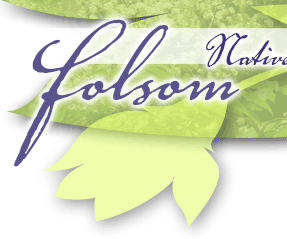|

Seasonal Guide to St. Tammany's Native Plants
Interesting Related Links
Native Grasses in St. Tammany Parish
St. Tammany's Native Grasses, from Texas A&M, is a catalogue of grasses found in our area. It includes only those taxa from the genus Poa, and does not include sedges, rushes, irises, and other members of the monocots. This link does go to a map of Louisiana, broken down into parishes. Click on any parish, and you can get the list of confirmed grasses. Although the list looks complete, and it impressed the bejeebers out of me, I doubt if it is being updated.
As grasses and other monocots are essential for the survival of any local eco-niches, and most of the food we eat, understanding them is important. As a group, we probably have over neglected them, especially in landscaping and gardening. Maybe we can do some presentations at meetings this year.
Louisiana Wildlife and Fisheries -
Rare Plants of Louisiana — A great list of rare plants
in Louisiana by Chris Reid. From the various choices in the Natural Heritage
Program site, you can get lists of rare plants and rare animals in the
state, and a list of both rare plants and animals in a certain parish.
Available for downloading is a form to report rare species you come across,
and add to the database.
Cajun Prairie Habitat Preservation Society
The Cajun Prairie
Society works for the restoration of the
native grassland of southwest Louisiana — one of the best
projects of its type anywhere. Their field trips and
activities are frequent and worth attending.
This group, and the LNPS, are blessed by the active
presence of Dr. Charles Allen, current native plant
guru of Louisiana, with his wife (a wonderful cook and
host) and all around nice guy. Get his books, and read
the funny quotes inside.
Allen Native Adventures is the place to go to
obtain his books, arrange botanical tours, etc.
US Dept of Agriculture Natural
Resources Conservation Service
An all-time favorite. You can pull up a guide to plants of North America
using either the Latin name or a common name. However, the site only recognizes
one common name per taxa and, as many plants have multiple common names,
and the same common name can refer to several unrelated plants, knowing
some of the more common Latin names is good. For some plants, you can
obtain growing, fire resistance, etc. These good folks work out of Baton
Rouge.
Native Plant Forums
Useful and interesting. Not many folks from very southernmost parts of the US write to them:
State Native Plant Societies
Atlas of Florida Vascular Plants
Another favorite site, although the Atlas of Florida Vascular Plants does not allow use of common names at all, and only lists vascular plants of Florida. It does have pictures of many plant species, and you can get full listings of Latin names ever used for a particular species. The site also has a county map of Florida, and those from which documented samples are shaded in. I really like this feature because from it I can see if a plant is from, say the panhandle with weather something like our own, or tropical Florida.
Native Plant Guides:
Many of the following titles can be found at your local library. Also checkout on-line sources and used/new book stores as some of them are out of print.
Allen, Charles M., PhD. And others. Trees, Shrubs, and Woody Vines of Louisiana. Allens Native Ventures, LLC, 2002.
Brown, Clair A. Wildflowers of Louisiana and Adjoining States. Louisiana State University Press, 1972. We call this “the bible”.
Duncan, Wilbur H. and Leonard E. Foote. Wildflowers of the Southeastern United States. University of Georgia Press, 1975.
Duncan, Wilbur H. and Marion B. Duncan. Wildflowers of the Eastern United States. University of Georgia Press, 1999.
Midgley, Jan W. All About Louisiana Wildflowers. Sweet Water Press, 1999.
Nelson, Gil. East Gulf Coastal Plain Wildflowers: A Field Guide to the Wildflowers of the Eastern Guld Coastal Plain, including….parts of Southeastern Louisiana. A Falcon Guide. Globe Pequot Press, 2005.
Places to Go:
Northlake Nature Center
Lady Bird Johnson Wildflower Center (Texas):
a botanical garden in Austin, Texas, dedicated
to native plants with a mission to preserve and restore the natural beauty
and biological richness of North America, and to promote the understanding
that the health and well-being of human communities is directly related
to the health of the land.
Hilltop Arboretum of Baton Rouge (LA) and Crosby Arboretum
of Picayune (MS) , each uniquely contributes to the
knowledge and appreciation of our native ecology and
flora; both demonstrate A+, top-of-the-line
facilities, and a staff that is personable and
knowledgeable. Both are linked to state universities
that make it hard to get to the Arboretum websites.
Thus, both are blessed with website addresses that
don’t work, or don’t work well. Both do have websites
that are worth the effort to find and bookmark, and
for Pete’s sakes, go out and see their places.
Little River
Bluffs, A Nature Preserve and Retreat (Folsom, LA) - Owned and operated
by FNPS member David Campbell. Little River Bluffs is located on
a cool, artesian-fed river in 50 acres of woods, it offers the peace and
beauty of nature with three secluded accommodations from which to choose.
|



















